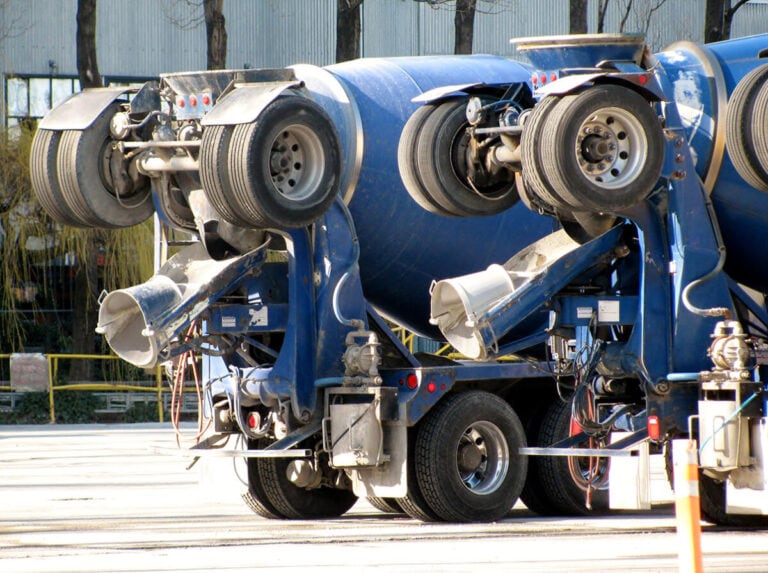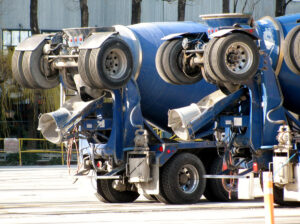Technology and other innovations have totally played a huge role in a very impactful way in various types of business. The impact it has given is no way different in the construction industry and other related businesses. In the most particular sense, the concrete industry is also influenced by the different innovations emerging nowadays. Construction companies and concrete contractors are expected to openly embrace these new technology trends. While on the other side, construction management software has been embraced and used by the majority of project managers these days and still continue to utilize this particular software tool. However, the point is, other concrete technologies must also be considered and acknowledged for other specific reasons.
Just like any other industry, there is always an increasing need for enhancements and improvements in the concrete industry whether it is efficiency and work productivity. There are issues still continue to rise such as increasingly high construction costs and the constant shortage of skilled workers. Apparently, more than 90 percent of contractors, builders, and construction managers have a difficult time looking for skillful and experienced laborers says the US Commercial Construction Index.
For concrete technology, there are several latest emerging trends that are preferably used by concrete contractors and are helping them overcome different work challenges in the easiest ways, improve overall work productivity and eventually enhance the quality of projects, works, and services they offer. See the list below:
- Intelligent Equipment
In terms of improving the production cycle and permission for predictive maintenance, concrete construction equipment such as IoT sensors as well as GPS trackers are very much considered and highly recommended. By using this equipment, contractors can able to monitor cement mixers and other construction-related equipment. Receiving alerts can also be easy as usual. Other associated assets can be efficiently tended just when any issues arise. And most importantly, before a certain problem becomes so severe, it will be immediately addressed because of the usefulness of this mentioned equipment.
Foremen found GPS trackers very useful for it keeps them up-to-date when cement trucks are used and directly on the move. The data they got has empowered the foremen in terms of planning jobs appropriately and quickly particularly when working around delays.
But one can still able to monitor all equipment, tools, and other resources used without the application of GPS trackers. Using the best construction management software like Pro Crew Schedule, tracking, and monitoring of every single thing involved is easy – crew members, project, resources, etc. This reliable software is ultimately available in the market. Get now a live demo.
- Ultra-High Performance Concrete (UHPC)
The introduction of UHPC in the industry has been a new trend. UHPC is popularly known as the new concrete technology. It contains numerous novel ingredients specifically the fibers but still retaining 80 % of the overall traditional concrete. The fibers often differ in strength when it comes to stainless steel and polyester. Fibers used are capable of delivering additional durability and strength specifically to the end products. UHPC tends to have a longer life of usefulness in comparison with the traditional concrete. Approximately, it has more than 75 years of usefulness whilst the traditional concrete normally has 15-25 years. The comprehensive strength is also determined and considered and other additional benefits of UHPC include remarkable resistance to environmental degradation as well as moisture penetration. There’s also great resistance to ductility and adhesiveness.
Below are other major qualities of UHPC apart from the mentioned above:
- Freeze/thaw resistance– after 600 freeze/ thaw cycles, UHPC is expectedly 100% exhibited of its substantial properties
- Abrasion resistance– UHPC strongly demonstrates excellent abrasion resistance twice as much as normal concrete’s resistance.
- Chloride permeability– UHPC amazingly showed greatly migration of low chloride when being tested compare with the normal concrete having less than 10%
UHPC is basically known as the first being used for bridge construction. Here is a long list of “bridge applications” for UHPC:
- Field-cast closure
- Bridge decks and its thin bonded overlays
- Precast concrete piles
- Security and applications for blast mitigation
- Pre-stressed girders
- Graphic Concrete
Using graphic concrete, designs and visual interest are equally united. This particular technology has been usually used on precast concrete in order to create different patterned surfaces. Several images can be applied too. The concrete itself is proven to lasts longer the same way as the plain and standard ones. With graphic concretes being used as an addition to the plain version, it makes a very much favorable option on any projects. And also, plain concrete would not seem to be much boring or too plain for the eyes if graphic concrete is used.
Durable and Sustainable
The Graphic Concrete pattern is 100% concrete and this utterly means that it is durable to the greatest extent. Remember that high-quality concrete will absolutely last but those having poor quality, it sure isn’t lasting. Basically, patterns do not have anything to do with it but with the concrete mix design. Graphic concrete is environmentally friendly. As a matter of fact, its recyclable membrane will never emit any destructive chemicals or harmful gasses. And most importantly, the use of solvent-based materials can be lessened as well as the dust consumption during the production.
- Concrete 3D Printing
There are a lot of promising benefits upon using Concrete 3D printing.
Some of the unique concrete designs are believed to be possibly crafted now compare before. Speaking of its benefits, affordable homes can be built specifically for lower-income families as well as the production time for a certain project can be greatly reduced. It never is a new thing that building a concrete structure or any architectural features is time-consuming and construction costing tends to get higher. But with 3D printing for concretes, it can able to facilitate the expanding production of structures, and time-saving is incredibly unbeatable.
What are concrete 3D Printers capable of providing today?
Over a long period of time since its introduction, 3D printing has been a real asset for architecture. Everything now is 3D printable – concrete blocks, walls and etc., compare before when it couldn’t handle larger-scale projects. Below are what 3D printers can able to produce and layout:
- 3D printed bridges
- Atypical 3D printed structures
- 3D printed architectural features
- 3D printed houses
- 3D printed art
- Off-site Construction
This typically refers to the fabrication, design, and lastly the assembly of different elements at a particular location apart from the usual actual site. One of the most common off-site techniques utilized nowadays in the course of a construction job is the precast/prefabricated concrete. The work performed for this is usually done on a recurring basis with several workers involved working at different sites.
Seemingly, this approach is usually utilized as reserved for complex and larger projects. Contractors can assure that a worker can able to master a certain project easily. However, a crew schedule is still necessary to have and use by them in order to track all crew who are working separately but collaboratively. It is also equally important to apply construction crew management at the same time so that real-time collaboration is achieved and constant communication will be prevalent.
The offsite construction is usually best preferable under the following conditions:
- When there’s space limitations in the site
- If there’s weather issues at the site that can possibly delay the ongoing project
- Occurring risks and issues due to vandalism
- When the project necessarily has to meet tighter deadlines
- Safety concerns due to intense cold, hot and higher heights
- Self-healing concrete
Cracks have been the most common and recurring issue found in many buildings. Normal people can obviously identify this type of issue since it occurs normally at the surface areas. Below are the several reasons why cracks formed and appear abruptly:
- Concrete shrinks and expanded due to differences in temperature
- Improper cover during the concreting process
- Heavy loads are applied
- Insufficient vibration during the time of concrete laying
- Occurring erosion because of reinforcement steel
- Settlement of structure
Just when the concrete areas started to have cracks, expect that water and air will get in. If this happens, it rapidly speeds up the degradation of the concrete. So the question will be like this, what if by any chance, concrete itself can stop the degradation process and actually heal itself?
It might sound unusual and bizarre but a lot of innovations are profoundly taking shape to any construction-related aspects. Concrete is definitely included to be influenced and changed by these innovations for the better.
This self-healing concrete has been made for newer mixtures and also serves as a repair mortar especially for prevailing and existing structures.
- Light-generating cement
The cement that is capable of absorbing and radiating light has been developed as of today. It can basically light up a few areas such as bridges, roadways, bike paths, and all other areas without electricity. So the most asked question is how does this work?
During the day, the cement will absorb solar energy. After the absorption, it is capable of emitting light for approximately 12 continuous hours. But for this to be possible, there should be something to remove and that is the crystallization found in the cement. By doing so, the light can openly pass through inside accordingly just as what being expected.
Key Takeaways
Undoubtedly, the year 2020 is definitely expected to be a major breakthrough year for the concrete industry with the above-mentioned futuristic trends that continue to emerge. The concrete industry as a sector having an emphasis on real-time collaboration and efficient communication is truly unbeatable. Having this, everyone involved can definitely hope and expect for greater productivity rates and lesser excruciating project delays.





